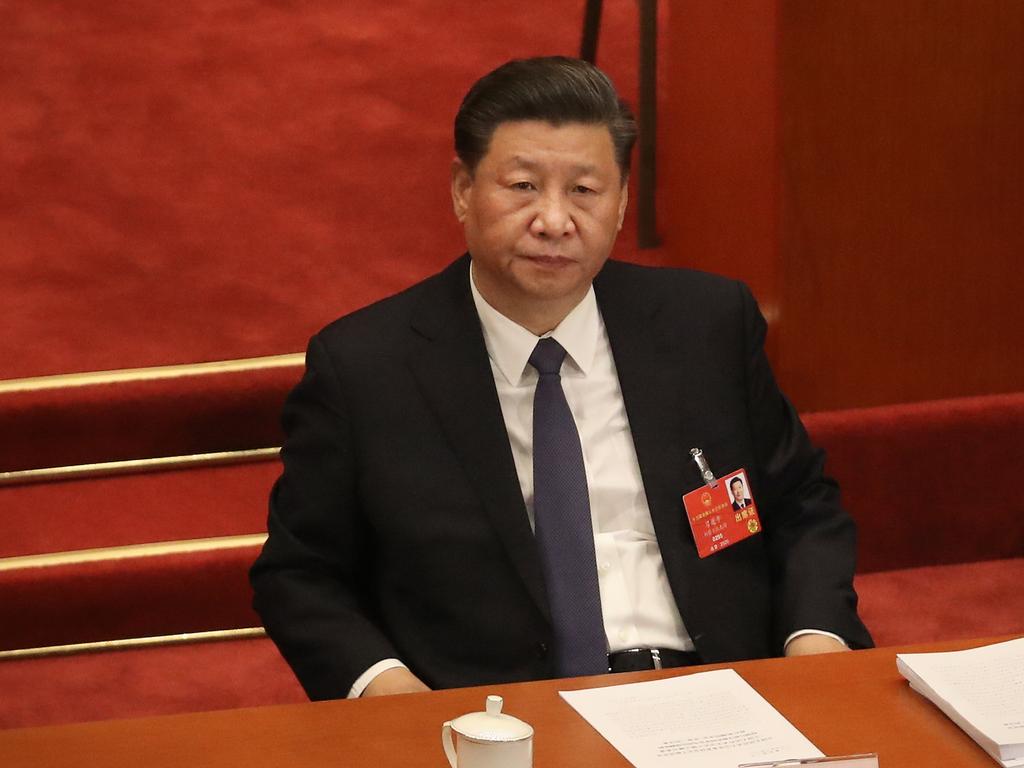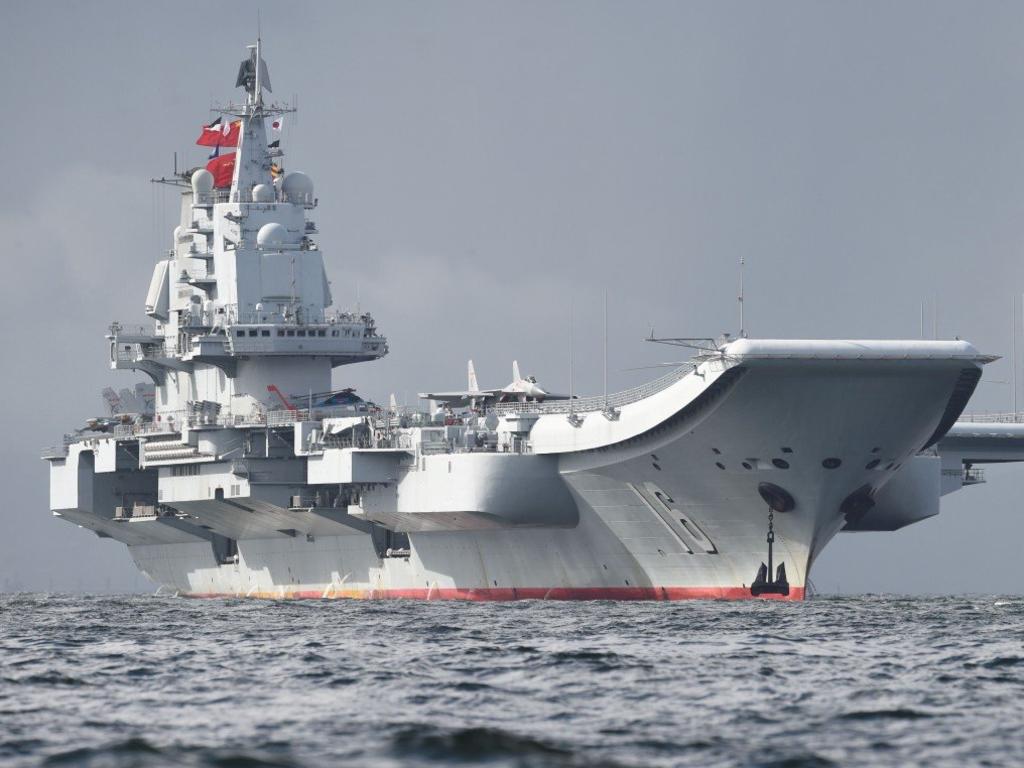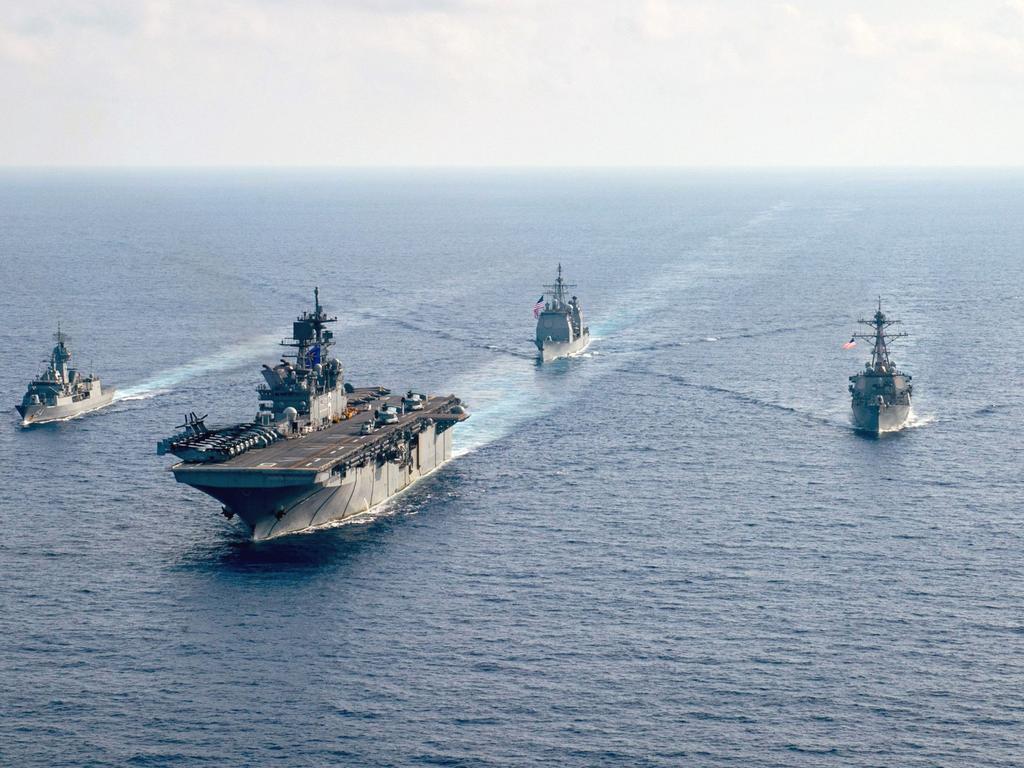China’s bold military move against US in the South China Sea
Chairman Xi Jinping has deployed two new aircraft carriers in a move designed to stoke tensions with the US and ultimately, Australia.
Chairman Xi Jinping has lost patience. His nation’s economy is suffering. COVID-19 has strained the seams of his credibility. He needs a win. So he’s doing what strongmen do best – upping the military ante.
Both of Beijing’s new aircraft carriers are deploying together for the first time. They’ve been warming up in the secure Yellow Sea. Soon, they’ll be headed south.
The People’s Liberation Army navy (PLAN) Liaoning and Shandong are engaged in combat readiness training in the tightly controlled Bohai Bay. It’s just the second week of an intensive 11-week simulated conflict that will eventually reach deep into the South China Sea.
And it’s just one of a barrage of military and diplomatic moves – extending from Japan across Asia to the mountain borders with India – that are escalating international tensions.
As a result, “the risk of a military confrontation in the South China Sea involving the United States and China could rise significantly in the next eighteen months,” warns a new report from the US think tank Council on Foreign Relations.
And how the US responds has severe implications for the status of its alliance with Australia.
RELATED: Sinister China challenge US can’t fight
RELATED: Russia’s virus ‘win’ hides damning truth

NATIONAL FERVOUR
Beijing insists the East and South China Seas is its inalienable territory. In 2016, an international court of arbitration rejected this claim as unfounded.
It also claims the island of Taiwan – where the defeated Republic of China government retreated to after the 1949 civil war – to be nothing more than a renegade province.
Now, across China, a “groundswell” of public support is erupting in support of a military invasion of Taiwan.
At least, that’s the appearance.
At worst, it’s a state-sponsored campaign using state-controlled media to promote the idea.
At best, Beijing isn’t offended enough by the notion to order its army of censors to remove such provocative sabre-rattling.
One such example is a Naval and Merchant Ships Magazine video examining in fine detail what an attack on the democratic island nation could look like. It was released the same day Taiwan’s recently elected President Tsai Ing-wen officially took up office.
Always fascinating to see the little details that get included in this sort of invasion porn.
— Gum on the sole of China’s shoe (@ProfundumPhoto) May 24, 2020
The Tsai Ing-wen electoral poster seems to be a staple of the genre, then we’ve got the fire-fight in front of the presidential palace and the Taipei MRT. pic.twitter.com/SYxjbA2XSt
“In around four minutes, Taiwan’s air power is badly damaged and those Taiwanese aircraft that have already taken off, will be shot down with S400 missiles,” the state-controlled magazine boasts. “After nearly two hours … all anti-air defence bases are destroyed, and most of Taiwan’s warplanes are damaged. What’s awaiting them is the second round of attacks after dawn.”
Another recent example is a set of evocative combat images released by the CCP-controlled Sichuan Fine Arts Institute. They depict fighting outside Taiwan’s Presidential Palace. On the ground are dead US Marines.
It’s part of a unified, national message.
“Reunification is a historical inevitability of the great rejuvenation of the Chinese nation,” declares China’s Taiwan Affairs office. “We have the firm will, full confidence, and sufficient ability to defend national sovereignty and territorial integrity.”
RELATED: Data leak exposes China’s virus cover-up
RELATED: China’s devious move under cover of virus

SABRE RATTLING
Beijing is planning a large invasion exercise near Hainan Province in August. Kyodo News in Japan reports this will be a simulated seizure of defended islands.
But the planned course of the Chinese aircraft carriers has raised eyebrows.
“An aircraft carrier strike group will pass through the Pratas Islands on its way to the exercise site to the southeast of Taiwan in the Philippine Sea,” a Japanese military insider reportedly said.
The Pratas (also called Dongsha or Tungsha) is a South China Sea group of atolls controlled by Taiwan. Sending major warships through their waters would be significant intimidation by Beijing. The territorial ‘bubble’ offered by the Taiwanese islands has also been exploited by the US in recent weeks, with some 13 flights by intelligence-gathering aircraft over the area to monitor nearby Chinese activity.
But international analysts suggest Beijing’s move is not the opening move of any invasion. The islands, they say, are mostly irrelevant after the controversial construction of eight artificial island fortresses.
“There are just 200 Taiwanese troops stationed on the Pratas, so it doesn’t make sense for the PLA to deploy an aircraft carrier strike group to take such a small island,” the Japanese defence official said.
A Taiwanese military analyst agreed, telling the South China Morning Post that the exercise was instead part of an overall scheme to militarise the East and South China Sea region.
“The landing exercise is part of the PLA navy’s regular training to achieve Beijing’s plan to bring the South China Sea under its control,” Chi Le-yi said. “A landing drill could be seen as preparation for an attack on Taiwan, but it is more to do with the PLA building up its combat systems for any possible conflict in the South China Sea.”
But Taiwan’s Chief of Joint Operations, Major General Lin Wen-huang, felt compelled to reassure his nation that there were plans in place in case of a Chinese attack.

GUNBOAT DIPLOMACY
Domestically, China’s economy is struggling with the fallout of COVID-19. This isn’t unusual. The whole world finds itself in a similar situation.
But Chairman-for-life Xi must maintain his grip on the Communist Party to stay in power.
“Xi could find it necessary to demonstrate strength while Beijing deals with internal fallout from the pandemic,” the CFR report reads.
Meanwhile, his “wolf warrior” diplomacy – while winning over a home audience – has only served to alienate Beijing further internationally.
Q: Your take on “excessive nationalism�
— Liu Xiaoming (@AmbLiuXiaoMing) May 24, 2020
A: Chinese people have strong sense of patriotism, but it is defamed by some western media as so-called “nationalismâ€. China has an international vision. As it becomes stronger, China will assume more international responsibility. pic.twitter.com/AxD4aFV1lV
“The continued downward spiral in US-China relations could also encourage Xi to adopt a now-or-never approach to the South China Sea,” the CFR states.
“Plausible changes to China’s domestic situation or the international environment could create incentives for China’s leadership to adopt a more provocative strategy in the South China Sea that would increase the risk of a military confrontation.
“Moreover, with expectations that the first stage of China’s military modernisation efforts will be completed in 2020, Xi could become more confident that China would succeed in pressing its claims militarily, especially if the United States is distracted internally with managing the coronavirus pandemic or its aftermath.”

WORST CASE SCENARIO
High among anticipated threats to regional stability is the prospect of Beijing arbitrarily declaring the Spratly Islands as territorial waters. It could then claim a 370km exclusive economic zone around them – effectively seizing control of the whole South China Sea.
How could the US respond?
It could maintain its presence – at risk of open conflict. Or it could withdraw – with severe diplomatic fallout.
“China’s EEZ claims could force the United States to choose between continuing operations, thereby risking direct confrontation with China, or reducing them, undermining its alliance commitments,” the CFR report states.
During crises, the United States and Australia usually unite for a common goal.
— Council on Foreign Relations (@CFR_org) May 19, 2020
Not this time, says @danielflitton https://t.co/YBXwOL8kNe
The think-tank argues only an increased military presence in the South China Sea by Australia, France, and the United Kingdom – with support from Southeast Asian countries – can undermine Chairman Xi’s confidence.
“The United States should increase military operations with like-minded countries, such as Australia, India, Japan, and Singapore, to compensate for its limited resources in the area. The US navy and others should sail through disputed waters more frequently and routinize FONOPs. This move would signal to China that the United States and its partners do not respect China’s excessive territorial claims.”
Jamie Seidel is a freelance writer | @JamieSeidel




